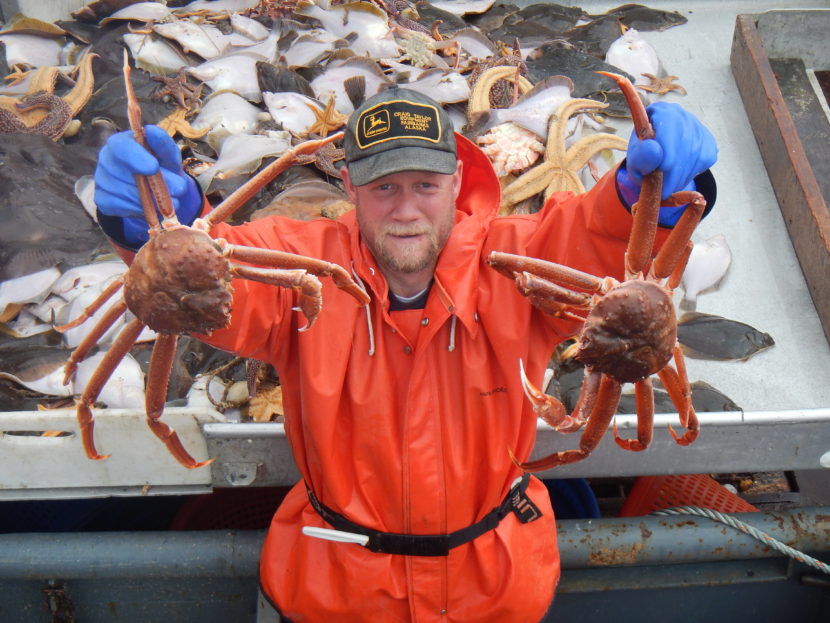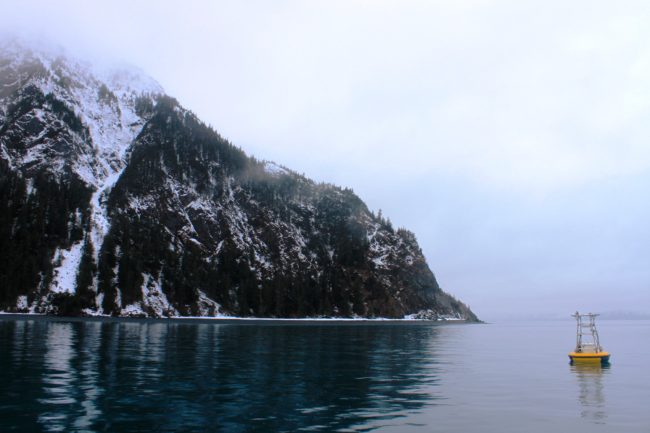
Climate change may get all the attention, but it has a less-talked-about but no less troubling twin: ocean acidification.
A growing chorus of Alaskans, from shellfish growers to fishermen, are fretting about the potential impacts to the state’s waters. Now a new collaboration is aiming to bring ocean acidification into the spotlight — with the hope that better understanding it will better prepare the state to adapt.
Historically, oceans are basic — that means not acidic. But about a quarter of the carbon dioxide released each year into the atmosphere is absorbed by the world’s oceans. That changes the chemistry of the sea water, making the oceans more acidic. That, in turn makes it harder for ocean-dwellers like crab, oysters, clams, and plankton to form shells — seriously threatening those species.
Darcy Dugan is coordinator of the brand new Alaska Ocean Acidification Network — whose goal is to educate Alaskans and connect scientists across the state. Since the Industrial Revolution, she said, there has been an estimated 30 percent increase in the acidity of waters globally.
“If you assume a “business as usual” scenario for emissions, we’d be looking at the oceans being 150 percent more acidic in 2100,” Dugan said. “That’s also more acidic than they’ve been in the last 20 million years.”
The rapid change may be outpacing sea creatures’ ability to adapt. And Alaska is expected to experience acidification faster and more intensely than its global neighbors because the water here is, as scientists say, ‘cold and old.’ That is, cold water and water from the deep sea is already more acidic.
“These waters naturally store more [carbon dioxide] year round, which means we’re closer to a dangerous threshold to begin with,” Dugan said. “And then as winter storms bring colder water and older water to the surface, the state can intensify.”

Alaska’s Bering, Chukchi and Beaufort seas are all expected to move out of their historic range of variability in the near future. Dugan said the Beaufort Sea is expected to leave its natural range this decade. And that could affect Alaskans’ way of life — because the species most affected by acidification, like plankton, support the state’s most important fish, like salmon
“Right now we have a $5.8 billion seafood industry and the concern is it’s not just commercial species that might be affected by ocean acidification, but the species they eat,” Dugan said. “So once you knock one part of the food chain, the whole food chain could feel the effects.” Plus, she said, about half the seafood in the U.S. comes from Alaska waters.
Dugan hopes a better understanding of the chemistry and ecology of ocean acidification will help the state respond to future changes. That’s where the Alaska Ocean Acidification Network comes in: they are working to connect scientists and communities, from Kotzebue to Sitka, to share best practices for monitoring changes, so the state can respond and adapt to major shifts in the ecosystem.
In August, the Network will host a webinar explaining ocean acidification and its impact in Alaska and present research at the Aleutian Life Forum.
